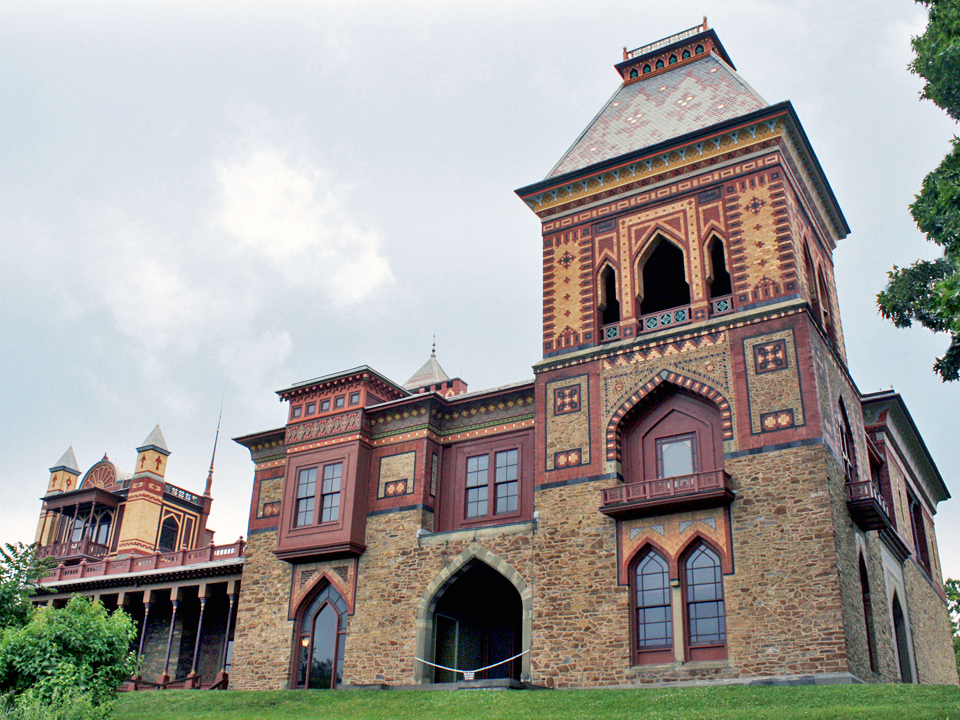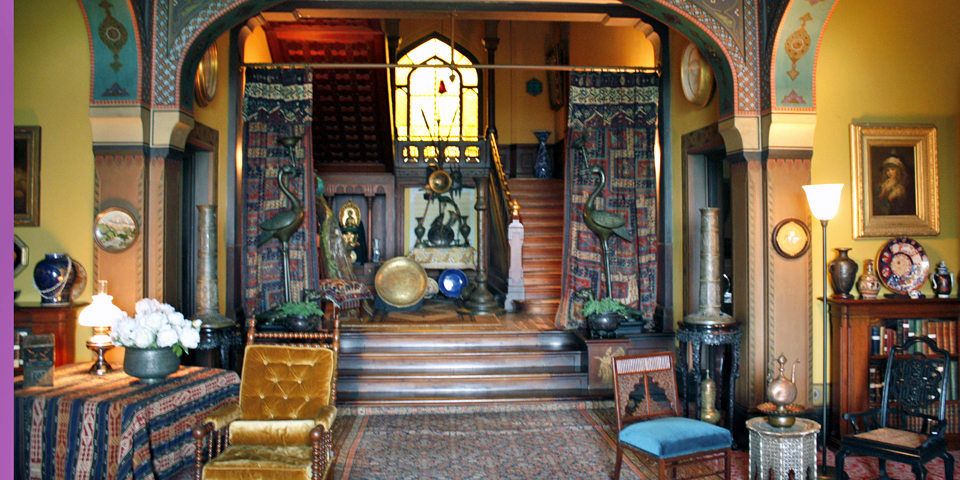The Hudson River School of Art: landscapes and the national parks
Olana, Catskill, New York
The Hudson River Valley is a region from which the legends and literature of Washington Irving and James Fennimore Cooper and the landscapes of Thomas Cole and his followers gave a new nation international recognition. The Hudson Valley School of Art served as inspiration for preserving a natural beauty seen by too few and for the creation of national parks.
The homes of two of the area’s most prominent landscape artists can be toured to learn more about this American art movement.
Thomas Cole
Thomas Cole National Historic Site, home of landscape artist Thomas Cole, Cedar Grove, Catskill, New York
Thomas Cole house, Thomas Cole National Historic Site, Cedar Grove, Catskill, New York
The Thomas Cole National Historic Site, Cedar Grove, in Greene County, includes the home, period furnishings, art and artifacts, and a restored studio. In an age when most successful painters were creating portraits for wealthy patrons, Cole found little financial success in this. He moved to Catskill, New York, and closely studied and painted the natural scenery around him. His magnificent landscape paintings often featured dramatic light and religious or allegorical themes and revealed his awe and appreciation of the beauty and majesty of the natural wonders of the American wilderness. His work became the foundation of the 19th century American landscape tradition known as the Hudson River School of Art.
Many of his masterpieces were created from the glorious views of the Catskills from the west porch of his home. Cole would also walk for miles, sketching what he saw, collecting specimens, and returning to his studio to paint. His work came to define the American frontier and brought attention to its beauty. It attracted tourists to the region and inspired an environmental preservation movement that led to the National Parks system.
Self-guided trails lead to the views that inspired the Hudson River School artists.
The grand home of another artist is just across the river. For a pleasant break between tours, stop in Catskill’s Main Street area for lunch or to browse the shops.
Frederic Church
Olana, home of landscape artist Frederic Church, Catskill, New York
Olana, Catskill, New York
A wealthy New Yorker impressed by Cole’s landscapes sent his son, Frederic Church, to study with him for two years. Church went on to travel the world and to amass a fortune with his artistic talent and business and marketing acumen. Some of his works were sketched from Cole’s porch or with Cole from the hill where he eventually built his home, but he is best known for his portrayals of Niagara Falls, the Andes and icebergs.
He became the most popular American landscape painter of his time and charged a handsome admission to see just one of his magnificently staged paintings of places most people only dreamed of.
foyer of Olana, home of landscape artist Frederic Church, Catskill, New York
foyer of Olana, Catskill, New York
His Persian-style palace, Olana, in Columbia County, is filled with original furnishings collected in his travels and looks much as it did when he lived there. It is considered to be one of the most important artistic residences in the United States and its authenticity makes it one of most visited sites in the state.
Olana, home of landscape artist Frederic Church, Catskill, New York
Like his friend Fredrick Law Olmstead, designer of Central Park, he had an artistic eye for landscape design. Church created visual experiences in popular Picturesque landscaping style with a foreground, middle ground, and background to highlight the elements of the area, planning glimpses and vistas for guests’ approach. This was his masterpiece and he wrote “I can make more and better landscapes in this way than by tampering with canvas and paint in the studio.”
Olana, home of landscape artist Frederic Church, Catskill, New York
Paintings of the Hudson River from Olana by Church and fellow artists are in an exhibit. A computer program illustrates how windows frame the views, part of Church’s extraordinary integration of architecture, and landscape, and his art.
Olana’s grounds are open free of charge to the public 8AM to sunset. The viewshed of over 1000 acres has been preserved for generations to come





